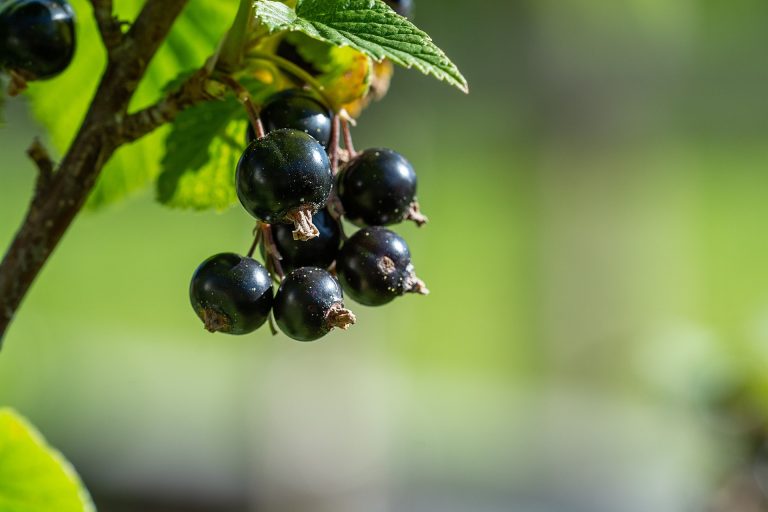Blackcurrant: Botanical Insights, Nutritional Benefits, Culinary Uses, and Agricultural Significance
Introduction
Blackcurrants (Ribes nigrum) are small, glossy berries celebrated for their intense flavor, deep purple-black hue, and rich nutritional profile. Widely cultivated for their culinary versatility and health benefits, blackcurrants play a significant role in agriculture, food processing, and nutrition science. This comprehensive article delves into the multifaceted world of blackcurrants, exploring their botanical characteristics, nutritional composition, health-promoting properties, culinary applications, global cultivation practices, challenges, and future prospects.

Botanical Characteristics and Cultivars
Blackcurrants belong to the Grossulariaceae family and are native to Europe and Asia. Key botanical features include:
- Shrub Description: Blackcurrant plants are deciduous shrubs that grow up to 1-2 meters (3-6 feet) tall. They have deeply lobed, dark green leaves and produce clusters of small, glossy berries.
- Fruit Characteristics: The berries are round to oval-shaped, approximately 1 cm in diameter, with a smooth skin and a distinctive tart flavor.
- Varieties: Cultivated varieties of blackcurrants vary in fruit size, flavor intensity, and resistance to diseases. Common cultivars include ‘Ben Lomond’, ‘Ben Alder’, and ‘Titania’, each selected for specific traits such as yield and berry quality.
Nutritional Composition and Health Benefits
Blackcurrants are renowned for their exceptional nutritional content, offering a range of vitamins, minerals, antioxidants, and phytochemicals:
- Vitamins: Rich in vitamin C, blackcurrants provide significantly higher levels of this antioxidant vitamin than many other fruits. Vitamin C boosts immunity, synthesis of collagen, and absorption of iron.
- Antioxidants: Blackcurrants are potent sources of anthocyanins, flavonoids, and polyphenols, which contribute to their deep color and provide antioxidant protection against oxidative stress.
- Minerals: They contain essential minerals such as potassium, manganese, and copper, important for electrolyte balance, bone health, and enzyme function.
- Dietary Fiber: Blackcurrants are a good source of dietary fiber, promoting digestive health, satiety, and blood sugar regulation.

Culinary Uses and Culinary Versatility
Blackcurrants lend themselves to a variety of culinary applications, adding tartness and depth of flavor to both sweet and savory dishes:
- Fresh Consumption: Enjoyed fresh, blackcurrants are tart and tangy, often paired with sweeteners in desserts, sauces, or salads.
- Preserves and Jams: Blackcurrants are commonly used to make jams, jellies, and preserves due to their high pectin content and natural acidity.
- Beverages: They are used to flavor beverages such as juices, cordials, liqueurs, and cocktails, providing a distinctive berry flavor.
- Baking: Blackcurrants are added to baked goods such as pies, tarts, muffins, and cakes, enhancing both flavor and visual appeal.
Agricultural Significance and Global Cultivation
Blackcurrants are cultivated in temperate regions worldwide, primarily for commercial production and home gardening:
- Climate Requirements: They thrive in cool climates with adequate rainfall and well-drained soil, preferring sunny to partially shaded locations.
- Propagation: Blackcurrants are propagated via hardwood cuttings or by layering, with new plants typically bearing fruit within 2-3 years of planting.
- Pests and Diseases: Common pests include aphids and gall mites, while diseases such as powdery mildew and rust can affect plant health and fruit quality.
- Harvesting: Berries are harvested when fully ripe, typically in mid-summer, using hand-picking or mechanical harvesters to ensure careful handling and preservation of fruit quality.
Challenges in Blackcurrant Cultivation
Blackcurrant cultivation faces several challenges that can impact yield, quality, and sustainability:
- Disease Management: Effective disease control measures are crucial to prevent fungal infections and viral diseases that can reduce plant vigor and fruit production.
- Climate Change: Variability in weather patterns, including late frosts or heatwaves, can affect flowering, fruit set, and overall crop productivity.
- Market Demand: Ensuring consistent market demand and pricing stability for fresh and processed blackcurrant products in competitive global markets.

Economic and Social Impact
Blackcurrant production contributes to local economies, rural communities, and global food supply chains:
- Economic Value: Commercial cultivation supports livelihoods through employment in farming, processing, distribution, and export sectors.
- Value-Added Products: Blackcurrants are processed into a range of value-added products, including juices, syrups, supplements, and flavorings, enhancing their market versatility and consumer appeal.
- Cultural Heritage: In regions such as Northern Europe and New Zealand, blackcurrants hold cultural significance, featured in traditional recipes, festivals, and culinary traditions.
Future Prospects and Innovations
Advancements in blackcurrant research and cultivation aim to enhance sustainability, yield, and nutritional quality:
- Breeding Programs: Developing new cultivars with improved disease resistance, yield potential, and flavor profiles tailored to diverse growing conditions.
- Nutritional Research: Investigating the health benefits of blackcurrants and their bioactive compounds, including potential applications in functional foods and nutraceuticals.
- Sustainable Practices: Implementing sustainable farming practices, such as integrated pest management, soil conservation, and water-efficient irrigation techniques.
- Global Expansion: Exploring new markets and consumer demographics for blackcurrant products, including emerging markets in Asia, North America, and beyond.
Conclusion
In conclusion, blackcurrants stand as a testament to the nutritional richness, culinary versatility, and agricultural significance of berry crops. From their botanical origins and nutritional benefits to their global cultivation practices, challenges, and future innovations, blackcurrants continue to captivate consumers, researchers, and growers alike. As we navigate towards a future shaped by climate variability and technological advancements, blackcurrants remain resilient, adaptive, and indispensable in promoting health, flavor, and sustainability in global food systems.
This article has provided a comprehensive exploration of blackcurrants, covering their botanical insights, nutritional benefits, culinary uses, agricultural significance, challenges, and future prospects. Whether enjoyed fresh, processed, or as ingredients in culinary creations, blackcurrants exemplify the enduring appeal and nutritional value of nature’s bounty in the realm of fruits and berries.

